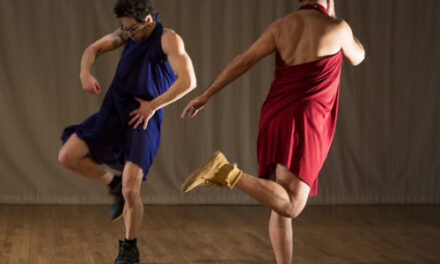Are there such things as 64th notes? If so, how often do they ever appear in a familiar piece of music? At times during Kurt Nikkanen’s playing of the Mendelssohn Violin Concerto in E minor, Op. 64, the flurry of notes pouring out of his fiddle seemed to bring to mind the warning from more than one choral director to pay close attention to the demands of the score, “because there are a lot of notes there.”
Nikkanen, an American-born violinist who started performing in concert at age 12, played the familiar concerto with the North Carolina Symphony as part of the Duke Medicine series at Meymandi Concert Hall, and he sparkled throughout the entire piece. Neither his fingering nor his tone ever faltered, even during the final movement, in which he went beyond brisk into near-warp speed to play the effervescent (sometimes incandescent) allegro non troppo-allegro molto vivaci.
The concerto might be one of the “warhorses” of the classical repertoire, but it never ceases to please an audience with its melody, dynamics and frequent bursts of virtuosity from the soloist. And though one doesn’t often remember the more introspective passages, given the fireworks of the finale, they are present. One can sense tension and drama in the first allegro molto appassionato movement, in which the solo violin occasionally plays against the full orchestra, and in the cadenza of that movement. The second andante movement is one of Mendelssohn’s loveliest songs, and Nikkanen offered a bright sound without being piercing. In this movement, as in the other two, he reached the highest notes effortlessly, while keeping a velvety soft tone, never dry, never thin. The exposed double-stopped passages were skillfully done.
Nikkanen handled the demands of the finale flawlessly, always pushing ahead with crisp attacks, bouncing along with the light-heartedness of the score, energy never flagging. And the orchestra, under the direction of guest conductor Timothy Myers of the Opera Company of North Carolina, stayed with the soloist each step of the way. The reeds’ accompaniment of the main theme was especially nice, and the full orchestra offered fine support throughout. This was a top-level performance from beginning to end by both soloist and orchestra.
The theme of the program was “A Journey Down the Rhine,” and the orchestra opened with a lovely orchestral suite by Bach and closed with Schumann’s Third Symphony in E-flat, Op. 97, the “Rhenish.” Both pieces received excellent performances under Myers’ sure hand.
Scored for a smaller ensemble of strings and winds, Bach’s Third Orchestral Suite in D, BWV 1068, is a charming piece, filled with nice melody and some lively rhythms. The suite opens grandly with strings and trumpets and also contains the familiar “Air,” one of Bach’s most famous melodies, which the strings played in the most impressive fashion, providing a soft cushion of sound that was simply gorgeous to hear. The pair of gavottes was lively, and the bourree even livelier, causing some serious toe-tapping. And the final gigue had a sweep to it that recalled the stirring opening.
Schumann’s Third Symphony contains wonderful melodies, as well as moments of both rustic simplicity and elegant majesty. In this work perhaps more so than the other two, one noticed the crisp clarity of Myers’ conducting, which showed an economy of style without being too reserved and moments of passion and emphasis without being too flamboyant. He kept brisk tempi throughout, yet he let the orchestra breathe. This was best shown in the stately fourth movement, which was Schumann’s musical retelling of a religious ceremony in Cologne Cathedral. In this movement, and in the livelier, dance-like finale, the brass section excelled, from the trombones that opened the fourth movement to the French horns that were displayed so prominently in the fifth movement. The finale was energetically rhythmic without being too light-hearted because the horns added considerable weight to the score.
The sound of the orchestra is quite good, with a strong string section complemented by fine winds and brass, and Myers exploited the strengths and skills of the players to great advantage throughout the concert.











